Archaeologists confront painful memories of the Spanish Civil War

ASTURIAS IS SPAIN’S INNER keep. This region on the northern coast has a “moat,” the Bay of Biscay, on one side, and the Contabrian Mountains as its southern ramparts. The local culture, which dates back to the Paleolithic and took shape under Celtic influence in the Iron Age, has proven resistant to outside influences. The Romans subdued the Astures, as the province’s people are called, but never truly conquered them. The Astures repulsed the Goths in the fourth century, and halted the Moorish invasion in the eighth. Asturias was the birthplace of the Reconquista, or the Christian reconquest of Islamic Spain. Even today, the province is an autonomous principality, and the heir to the Spanish throne is the “Prince of Asturias.” Its mountains are the last habitat of Spain’s brown bears. Asturias was not, however, spared from a threat that arrived from within. In the late 1930s, the Spanish Civil War divided cities, towns, and even families throughout the land. Today, concealed in this majestic, peaceful terrain is archaeological evidence of a unique aspect of the struggle as it played out here in the north—but resistance to unearthing these painful memories is profound.
This story is from the September/October 2017 edition of Archaeology.
Start your 7-day Magzter GOLD free trial to access thousands of curated premium stories, and 8,500+ magazines and newspapers.
Already a subscriber ? Sign In
This story is from the September/October 2017 edition of Archaeology.
Start your 7-day Magzter GOLD free trial to access thousands of curated premium stories, and 8,500+ magazines and newspapers.
Already a subscriber? Sign In
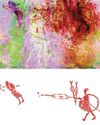
A Very Close Encounter
New research has shown that human figures painted in red on a rock art panel in central Montana depict individuals engaged in a life-or-death encounter during an especially fraught historical moment.
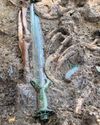
A Sword for the Ages
A zigzag pattern, now tinged with the green-blue patina of oxidized metal, adorns the octagonal hilt of a rare sword dating to the Middle Bronze Age in Germany (1600-1200 B.C.) that was recently excavated in the Bavarian town of Nördlingen.
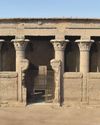
Ancient Egyptian Astrology
For centuries, layers of soot have coated the ceilings and columns in the entrance hall of Egypt's Temple of Esna. Now, an Egyptian-German team of researchers, led by Hisham El-Leithy of the Egyptian Ministry of Tourism and Antiquities and Christian Leitz of the University of Tübingen, is restoring the temple's vibrant painted reliefs to their original brilliance.
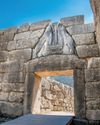
BRONZE AGE POWER PLAYERS
How Hittite kings forged diplomatic ties with a shadowy Greek city-state
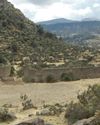
RITES OF REBELLION
Archaeologists unearth evidence of a 500-year-old resistance movement high in the Andes

Secrets of Egypt's Golden Boy
CT scans offer researchers a virtual look deep inside a mummy's coffin

When Lions Were King
Across the ancient world, people adopted the big cats as sacred symbols of power and protection

UKRAINE'S LOST CAPITAL
In 1708, Peter the Great destroyed Baturyn, a bastion of Cossack independence and culture

LAPAKAHI VILLAGE, HAWAII
Standing beside a cove on the northwest coast of the island of Hawaii, the fishing village of Lapakahi, which is surrounded by black lava stone walls, was once home to generations of fishers and farmers known throughout the archipelago for their mastery of la'au lapa'au, or the practice of traditional Hawaiian medicine. \"

A MORE COMFORTABLE RIDE
Although the date is much debated, most scholars believe people 5,000 years ago. For thousands of years after that, they did so without saddles. \"In comparison with horse riding, the development of saddles began relatively late, when riders began to care more about comfort and safety in addition to the horse's health,\" says University of Zurich archaeologist Patrick Wertmann.